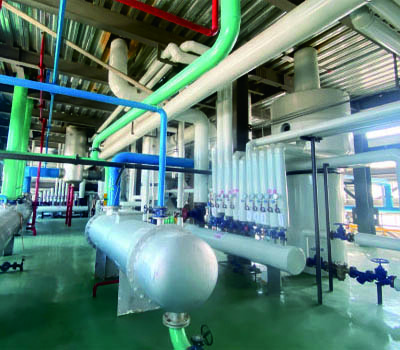Main factors affecting the leaching effect of solvent extraction plant
Solvent extraction plant is indispensable and important in modern oil processing industry. Its main function is to effectively extract oil from oil by solvent. However, the leaching effect is directly related to the quality and production efficiency of the final product, so it is particularly important to understand the main factors affecting the leaching effect. The following is an analysis of several key factors:

Quality of raw materials
The quality of raw materials is the primary factor affecting the leaching effect. The oil content, structure and moisture content of different oils are different. For example, the oil content and cell structure of soybean, rapeseed, peanut and other oilseeds have a direct impact on the permeability of solvents. In addition, the high impurity content of raw materials will hinder the contact between solvent and oil, and reduce the leaching efficiency. Therefore, it is necessary to clean and pretreat the raw materials sufficiently before leaching.
Pretreatment process
Before leaching, raw materials usually need to undergo pretreatment processes such as crushing, embryo rolling and steaming. These steps can improve the permeability of raw materials and make it easier for solvents to enter the interior of oil cells, thus improving the extraction rate of oil. If the pretreatment is not in place, such as uneven rolling or improper steaming temperature, it may lead to poor leaching effect.
Selection of solvents
The type and purity of solvent also have an important influence on the leaching effect. At present, No.6 solvent oil is the most commonly used solvent in leaching process, and its volatility and solubility are suitable for most oils. However, if the purity of the solvent is insufficient or the impurity content is too high, the solubility will be reduced, thus affecting the leaching efficiency.
Design and operating parameters of solvent extraction equipment Equipment design and operating parameters directly determine the efficiency of leaching process. For example, the structure of the extractor, the contact time between solvent and oil, and the flow rate of solvent will all affect the extraction rate of oil. If the equipment design is unreasonable or the operating parameters are set improperly, it may lead to insufficient contact between the solvent and the raw materials, thus affecting the final effect.
Ambient temperature and pressure
The temperature and pressure in the leaching process are also very important. Appropriately increasing the temperature can accelerate the dissolution of oil by solvent, but too high temperature may lead to oil oxidation or solvent volatilization too fast. Similarly, too high or too low pressure will have an adverse effect on the leaching process, so it needs accurate control.
To sum up, the factors affecting the effect of solvent extraction equipment involve many links, from raw material quality to equipment design to operating conditions, and each link needs to be strictly controlled. Only by comprehensively optimizing these factors can we improve the leaching efficiency and ensure the product quality and economic benefits.
